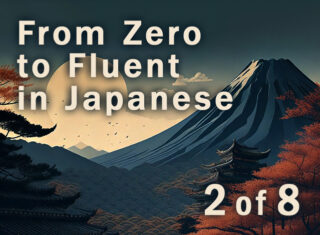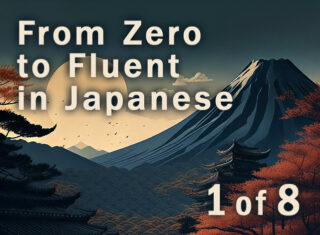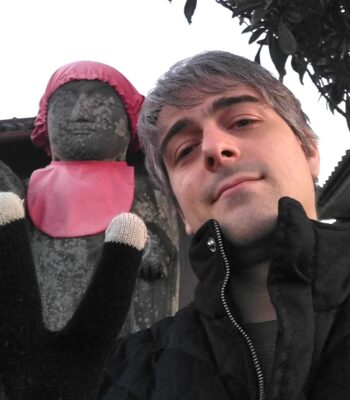- Learning Japanese
- From Zero to Fluent in Japanese
Discover Japanese Culture Through Anime! 6 Carefully Selected Anime That Bring Japan’s Traditions to Life
2025.05.20
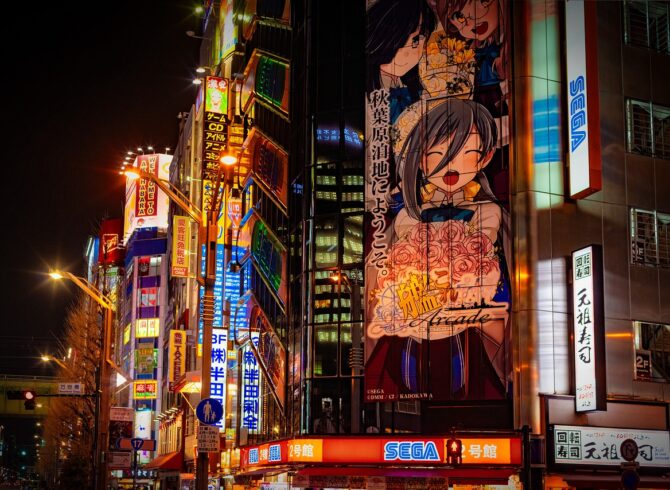
You might be wondering:
“I’d love to explore Japanese culture through anime—but what exactly can you learn from it?”
You're not alone in thinking that. In fact, anime is one of the best gateways into Japan’s culture. In this article, we’ll introduce six aspects of Japanese culture you can experience through anime, along with a list of six recommended titles that bring those traditions and values vividly to life.
Some of these anime are also big favorites among students at Oku Sensei’s Japanese, so we hope you’ll find a few that speak to you personally.
Anime isn’t just entertainment—it’s one of Japan’s most beloved and expressive subcultures. Many works are rich with cultural depth, reflecting the country’s traditions, values, and aesthetic sensibilities. Why not enjoy the story while immersing yourself in the heart of Japanese culture?
Why Anime Is One of the Best Ways to Learn About Japanese Culture
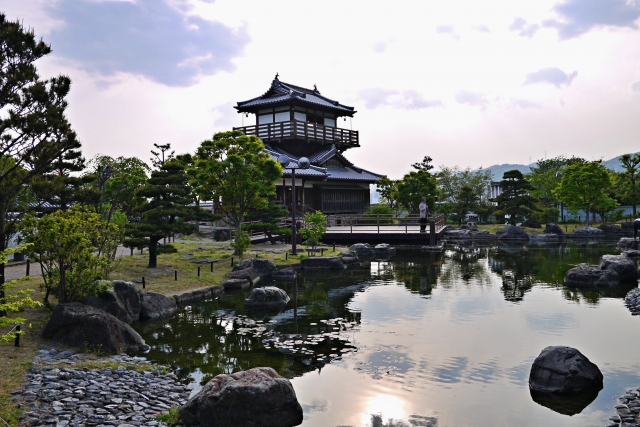
If you’re looking for a fun and meaningful way to deepen your understanding of Japan, anime might be exactly what you need. Here are three major reasons why anime is such a powerful tool for learning about Japanese culture:
- You can learn while being entertained
- Visual storytelling makes things easier to grasp
- It helps you appreciate the deeper values and beauty behind the culture
Let’s take a closer look at what makes anime so effective.
You Can Enjoy Learning About Japanese Culture While Watching Anime
By watching anime, you can learn about Japanese culture in an enjoyable way.
Japanese anime often features deep storytelling and compelling character development, so many titles offer a level of satisfaction similar to that of watching a drama or film.
With so many genres to choose from, you can find anime that not only suits your personal interests but also depicts cultural aspects of Japan that you’re curious to explore more deeply.
The Visuals Make It Easier to Understand
Anime allows you to learn while watching, which makes it easier to understand than books that rely solely on text.
For instance, if you're watching an anime that focuses on Bushido during the Edo period, you’ll be able to see the customs and behaviors of samurai through visuals. Even if you're unfamiliar with Japanese culture, this helps you form a clear mental image.
Because subjects like Japanese history or Bushido can feel challenging at first, anime—as a visually engaging tool—can serve as an ideal starting point for encountering Japanese culture.
You Can Understand the Cultural Background and Aesthetic Values
By learning through anime, you can also deepen your understanding of the cultural background and aesthetics that shape Japanese traditions.
In Japan, there's a unique way of seeing beauty—for example, the concept of wabi-sabi, which values imperfection. Japanese culture often reflects such uniquely Japanese ways of thinking.
Through anime, you can also learn about the underlying values and spirit behind Japanese culture, making it a useful resource for gaining a deeper appreciation of the country’s traditions.
Six Aspects of Japanese Culture You Can Learn from Anime
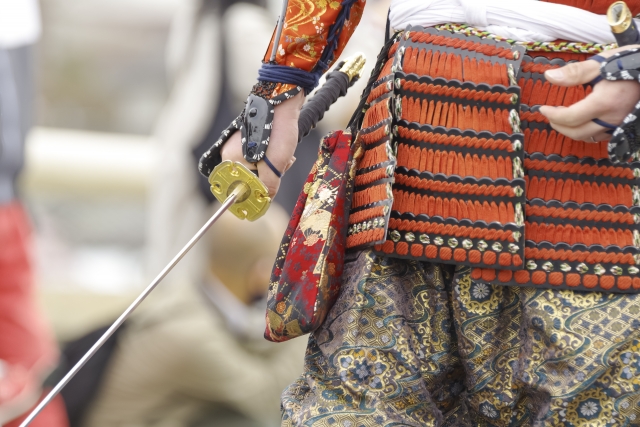
Here are six aspects of Japanese culture that you can learn through anime:
- Social structures and customs across historical periods
- Bushido (the way of the samurai)
- Traditional performing arts
- Seasonal events and festivals
- Food culture
- Language and communication styles
Let’s take a closer look at each of these.
Social Structures and Customs Across Historical Periods
By watching anime, you can learn about the social structures and everyday customs of different time periods in Japanese history.
There are many anime set in eras such as the Edo period or the Meiji period, and through their stories, you can get a sense of how class divisions and ordinary life varied between eras.
By watching series set in different periods in order, you can also feel how lifestyles and values have changed alongside the flow of time.
Bushido
Bushido is a kind of moral code followed by samurai, representing the ideal way of life for a warrior—and by extension, for a person.
Many anime portray characters who stay true to ideals like “Those with strength have a duty to protect the weak” or “Protect your friends and your town.” These values are especially common in anime set during times of war or conflict.
Traditional Performing Arts
There are also many anime that make traditional Japanese performing arts easy to understand and enjoy.
In some anime, the protagonist—often a beginner—takes on challenges in arts such as Noh, Rakugo, or Kabuki, and gradually hones their craft. These stories often explain the movements and techniques in detail, making them accessible to viewers unfamiliar with the art form.
Seasonal Events and Festivals
Japan has a wide variety of seasonal events, such as hatsumōde (first shrine visit of the year), cherry blossom viewing, fireworks festivals, and matsuri (local festivals). Many anime include these events as part of their stories.
By watching these scenes, you can learn about the clothing, food, and customs associated with each event, and may even find yourself thinking,
“I’d love to experience a Japanese seasonal festival in real life someday!”
Food Culture
Anime also gives you a window into Japanese food culture.
You’ll see everything from typical home-cooked meals to iconic dishes like sushi, ramen, bento, and onigiri. Many works also depict customs such as saying “Itadakimasu” before eating, or show subtle details of Japanese table manners.
Language and Communication Styles
By listening to the dialogue between characters, you can get a feel for how people communicate in Japanese.
Anime can introduce you to natural-sounding conversations in various settings—such as everyday chats between friends, interactions with family, or polite exchanges in a workplace. These are great for getting used to tone, nuance, and context in Japanese communication.
★Also try reading:
Deepen Your Understanding of Japanese Culture and Traditions! A Detailed Guide to 12 Iconic Traditions
6 Recommended Anime That Teach You About Japanese Culture
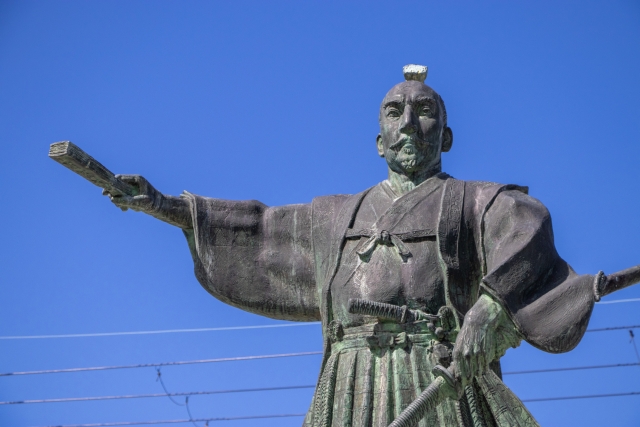
Here are six anime titles that are especially well-suited for learning about Japanese culture:
- Rurouni Kenshin
- Shōwa Genroku Rakugo Shinjū
- Hikaru no Go
- Chihayafuru
- My Neighbor Totoro
- Oishinbo
Let’s take a look at each one.
Rurouni Kenshin
Rurouni Kenshin is a historical action anime set in Japan shortly after the Meiji Restoration. It follows Kenshin Himura, a former assassin once known as Hitokiri Battōsai, who has sworn never to kill again and now seeks to use his sword to protect others.
The story takes place against the backdrop of Japan’s transformation after the fall of the Tokugawa shogunate. As Western values and technologies rapidly enter the country, the people of Japan wrestle with changing ideas of justice, morality, and how to live.
Kenshin’s journey—facing his past, meeting allies and enemies, and questioning what it truly means to protect others—carries powerful themes of Bushido, atonement, and hope. Beneath the sword fights lies a moving story that lingers in the heart.
Through the struggles and growth of people living in this transitional era, the anime offers insight into shifts in historical values, personal identity, and how individuals choose their path forward. It remains a beloved story for both readers and viewers alike.
Shōwa Genroku Rakugo Shinjū
Shōwa Genroku Rakugo Shinjū is a powerful human drama set in the world of Rakugo, one of Japan’s traditional performing arts. The story follows the lives, passions, and inner conflicts of people who have dedicated themselves to their craft.
It begins with a young man named Yotarō, recently released from prison, who becomes an apprentice to the legendary Rakugo master Yakumo.
At the heart of the story is the complex relationship between Yotarō and Yakumo, as well as Yakumo’s own past—his youth spent pouring his life into Rakugo, and his bond with his closest friend and rival, the genius performer Sukeroku.
The series delicately portrays the beauty and difficulty of pursuing mastery, the loneliness and pride of those who live for their art, and the emotional depth behind their performances.
Even if you’re unfamiliar with Rakugo, the passion and way of life of these characters will draw you in. Their stories reveal the timeless appeal and gravity of the art form, while quietly posing a question to the viewer:
“What do you live for?”
Hikaru no Go
Hikaru no Go is a coming-of-age story centered around the traditional Japanese board game Go. It follows the growth and struggles of a young boy who is drawn into the world of Go by chance—and ultimately finds his own passion.
The story begins when Hikaru Shindō, an ordinary middle schooler, comes across an old Go board and is suddenly possessed by the spirit of Fujiwara no Sai, a genius Go player from the Heian period. Though Hikaru initially knows nothing about Go, his encounters with Sai’s passion slowly awaken a desire to pursue the game on his own terms.
At the core of the series is Hikaru’s intense rivalry with Akira Tōya, and the way their competition pushes them both forward. The anime thoughtfully portrays Hikaru’s inner transformation as he becomes more and more captivated by the intellectual depth and strategy of the game.
Even viewers unfamiliar with Go will be drawn into the tension and emotion of each match. The series paints a vivid picture of the psychological battles that unfold on the board.
More than just a story about Go, this is a tale of what it means to dedicate yourself to something, of talent, effort, friendship, and rivalry—a story that resonates with anyone chasing a dream, no matter the field.
Chihayafuru
Chihayafuru is a vibrant coming-of-age story that centers on competitive karuta, a fast-paced game based on the traditional Japanese poetry anthology Hyakunin Isshu. It follows the passion and growth of young people chasing their dreams through this uniquely Japanese cultural sport.
The main character, Chihaya Ayase, first discovers karuta in elementary school after meeting a transfer student named Arata. Moved by his love for the game, she’s drawn into the world of karuta and, by high school, forms a competitive club with her teammates, aiming to become the top “Queen” (female champion) in Japan.
The anime vividly captures the speed, tension, and intensity of karuta matches. Players must instantly react to the reader’s voice, competing for cards with lightning-fast reflexes and strategy—making it feel just as intense as any sport.
Along the way, viewers naturally gain exposure to the poetry of the Hyakunin Isshu, as well as the aesthetic sensibilities of the Heian period from which it originates.
Chihayafuru also explores the joy and pain of chasing a dream, the emotional bonds between teammates, and the bittersweet challenges of youth, love, and friendship. Even if you’ve never heard of karuta before, this series is sure to move your heart.
My Neighbor Totoro
My Neighbor Totoro is a beloved animated classic from Studio Ghibli, cherished by audiences all over the world. Set in rural Japan during the 1950s, the story follows two young sisters, Satsuki and Mei, as they move to the countryside with their father while their mother recovers from illness.
There, the girls encounter Totoro, a mysterious forest spirit, and together they spend a gentle, heartwarming summer full of discovery and wonder.
The film beautifully portrays the imagination and curiosity of children, brought to life through encounters with fantastical creatures like Totoro and the Catbus. At the same time, it offers a richly detailed look at traditional Japanese rural life, from seasonal customs to family dynamics.
Through its depictions of lush natural landscapes, everyday rituals, and quiet moments of connection, the movie conveys Japan’s deep appreciation for nature, community, and the unspoken bonds between people and their surroundings.
With its soft pacing and understated dialogue, this film offers gentle wisdom and emotional warmth that resonates across generations. It’s a story that reminds us to treasure family, nature, and the invisible yet ever-present sense of something sacred in the everyday.
Oishinbo
Oishinbo is a legendary gourmet manga-turned-anime that follows Shirō Yamaoka, a newspaper journalist with a sharp tongue and an uncompromising palate. The story revolves around his role in a long-term editorial project to create the “Ultimate Menu”, pitting him against the rival team behind the “Supreme Menu”—a rivalry that often reflects deeper family and personal tensions.
Each episode explores a different aspect of Japanese food culture, from regional ingredients and local specialties to traditional cooking methods and the philosophy behind food itself.
One of the series’ greatest strengths is its attention to detail—not only does it highlight the flavors and techniques involved in each dish, but it also dives into the stories of the people who grow, prepare, and eat the food. The anime offers insight into Japan’s culinary traditions while showcasing the human connections forged through meals.
In addition to being a rich source of food knowledge, the show often touches on social issues, environmental concerns, and the meaning of “deliciousness.” Through its portrayal of seasonal ingredients and cooking practices, it deepens the viewer’s understanding of the relationship between nature, culture, and everyday life in Japan.
Oishinbo is more than just a food anime—it’s a celebration of Japanese values, gratitude for life’s bounty, and the profound joy of sharing a good meal.
★Also try reading:
Which Japanese Learning Service is the Best? A Comprehensive Comparative Analysis
Learning Japanese Culture from Anime – Conclusion

In this article, we introduced six aspects of Japanese culture you can learn from anime, along with six recommended titles that showcase them. What did you think?
By watching Japanese anime, you can enjoy the story while also learning about things like historical customs, Bushido, and the cultural values behind them.
If you’ve ever thought,
“I’m interested in Japanese anime and culture, and I’d love to try learning the language too!”
then why not start your journey with Oku Sensei’s Japanese online lessons?
At Oku Sensei’s Japanese, you’ll not only build practical reading, writing, and speaking skills in Japanese—you’ll also learn about the rich cultural background that gives the language its depth and beauty.
And right now, we’re offering a free 30-minute consultation, so be sure to check it out!


